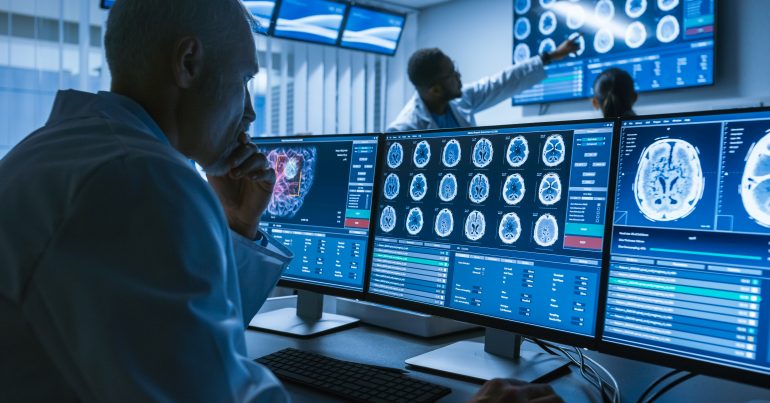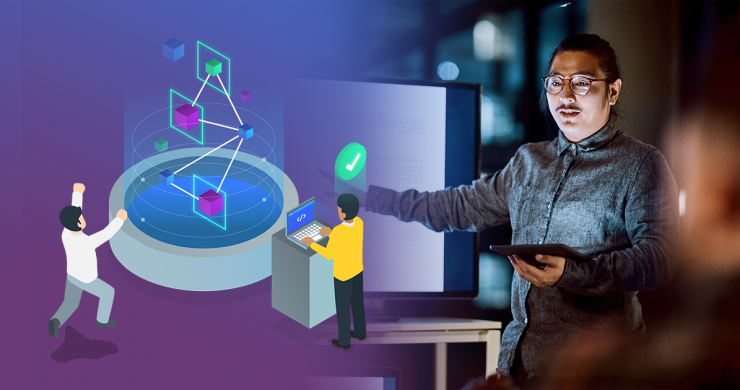Deep Learning: The A.I. Branch That Can Detect Tumors

You use Artificial Intelligence (A.I.) solutions every day, even if you don’t know it. Image recognition is one of its main uses. Science, business and education are all benefiting from it. But its application in medicine is probably the most interesting.
We are producing more and more data every day. To be precise, we produce 2.5 quintillion bytes every day. Amazing, isn’t it? Such a huge volume of data, in conjunction with the development of AI, offers a wide range of opportunities for different industries.
Deep Learning is a branch of Artificial Intelligence. It can be applied in as many sectors as you can imagine. For instance, some of its main applications are:
- Prediction: Artificial Intelligence allows computers to learn from past experiences (or data). This helps it to predict future events (without being explicitly programmed). In fact, predictions are the main application of A.I.. For example, Netflix can forecast what you are likely to love watching based on the past data you’ve generated. But predictions based on past data can be applied to any field, such as medicine. Here, A.I. can be used to predict which patients have a higher risk of suffering a heart attack.
- Natural Language Processing: (NLP) allows humans to communicate effectively with computers and helps computers interpret and process the human language. NLP draws from many disciplines, including computer science and computational linguistics. The goal of NLP is to process raw language inputs and, thanks to linguistics and algorithms, operate with the text. Therefore, considering the amount of unstructured data that is generated every day, from medical records to social media, automation is a must to fully analyze text and speech data efficiently. As stated in this analysis (O. Davydova), Natural Language Processing helps us obtain automatic translations, interactions, text classifications, or speech-to-text and text-to-speech conversions, just to name a few examples.
- Image Recognition: this is the core technology used by autonomous cars. But, plenty of other sectors have jumped on the tech. Most of the time, users are aware that A.I. is the technology behind some actions. This includes automated image organization of large databases and visual websites as well as face and photo recognition on social networks, such as Facebook, or photo editing, like adding creative filters to users’ pictures, as in the case of Snapchat.
Other things one can do thanks to image recognition are:
- Eye-tracking: enables recording of eye position and movement. This analyzes how humans process visual information. It records attention, interest, and arousal.
- Iris recognition: is being used as the new fingerprint in places with security checks, like airports.
- Boosting augmented reality: pointing at an object with your camera can tell you a lot about the object no matter how complex it is. (for example, a reactor control unit).
- Data from images: thanks to image recognition, there are solutions that extract data from images and store it. This makes it easy to recover it later using keywords or locations.
Image recognition is applied throughout other areas, not just social networks or websites. For instance, it is the main system behind autonomous cars, as mentioned above. Image recognition enhances security and effectiveness in this type of car and detects things on roads. This includes pathways, moving objects, vehicles, and people. But, also predicts speed, location, and the behavior of other objects near the car. Some systems can even see in the dark.
Deep Learning Can Detect Things in Mammograms
Using the same approach to detect obstacles on roads, DL can detect things in mammograms, scanners or many other medical tests. In fact, medicine is one of the sectors in which Deep Learning shows its most interesting applications:
- Tumor detection: early tumor detection allows early treatment. According to some research studies, “to detect a tumor, the DL algorithm learns important features related to the disease from a group of medical images and then makes predictions (i.e. detection) based on what it has learned.” Lung scans and melanoma images are some of the main areas of research for the application.
- Tracking tumor development: when the tumor has been identified, DL-based systems are an interesting option to track the development of tumors. Shape, area, density and location of the tumor are some of the characteristics analyzed by image recognition systems, which helps track tumor changes.
- Blood flow quantification & visualization: blood can be quantified without the use of contrast agents, allowing efficient visualization and quantification of blood flow. This visualization of the blood flow (also inside the heart) can be used to conduct a comprehensive diagnosis of cardiovascular diseases.
This is just an overview of how Image Recognition systems based on Deep Learning can be applied to medicine and disease detection.
For more articles about AI, Machine Learning and Deep Learning, check out our blog posts.

Get the latest roundup of the most important, interesting and stories from the past week. In your inbox every Saturday by 10am.
Related Articles you might like
The House Task Force road map that will transform businesses with responsible AI
On Tuesday, the Artificial Intelligence House Task Force released a substantial 253-page report outlining the principles for ethical and responsible […]
View Blog PostRecognized as a member of the Forbes Technology Council
We are proud to announce that Intelygenz President, Chris Brown is now a member of Forbes Technology Council. A vetted […]
View Blog PostKey Strategies for Financial Institutions to Unlock AI Value
In the financial services sector, artificial intelligence (AI) is often heralded as a transformative force capable of revolutionizing everything from […]
View Blog Post

